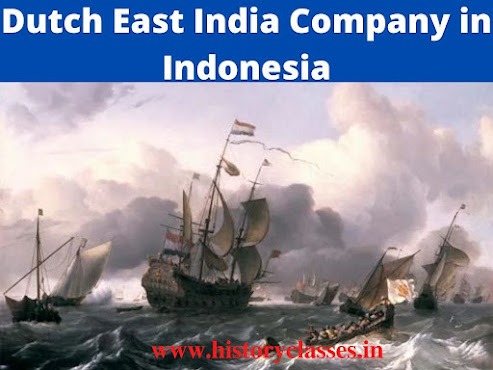Growth and impact of the Dutch East India Company in Indonesia
Even though European traders formed the primary historical force in 17th-century Indonesia, their presence undoubtedly led to changes that were to affect them for a long time. The VOC (Vereenigde Oost-Indische Compagnie) itself represented a new type of power in the region: it formed a single organization, traded in a vast territory, had a superior military force, and over time, the East Appointed a bureaucracy of skilled bureaucrats to look after it. In short, it could impose its will on other rulers and force them to accept its terms of trade. Under the governor-generalship of Jan Peterzoon Koen and his successors, notably Anthony van Diemen (1636–45) and Joan Matsukar (1653–78), the company laid the strong foundations of the Dutch commercial empire and became the paramount trading power of the Indonesia archipelago.
It was also the time when the VOCs made great strides towards establishing commercial control in the Indonesian islands during the 17th century. It conquered Malacca by defeating the Portuguese (1641), limited the British – after fierce rivalry – to a factory at Bencoolen (now Bengkulu) in south-west Sumatra, and established a network of factories in the eastern islands . Although it wanted to limit its activities to trade, the Company soon became involved in local politics in Java and elsewhere, and in becoming a mediator in dynastic disputes and conflicts between rival rulers, it essentially became the main political entity. creep into. Islands.
In the 1620s, Sultan Agung, ruler of the Kingdom of Central Java of Mataram and representative of the civilization of old and highly sophisticated Java, sought to expand his power over Bantam (near present-day Banten) in West Java. This demand of his put him in direct conflict with the Dutch, and he laid siege to the Dutch fort in Batavia. Although Agung’s army was eventually forced to retreat, the outcome of this confrontation was inconclusive and both the Dutch and the Javanese respected each other’s strength. However, due to internal differences within Mataram and a series of wars of succession between pretenders to the throne, Dutch interference in Java’s internal affairs increased in the 17th and early 18th centuries. In return for his military services to Sultan Agung’s successor Amangkurat I and then Amangkurat II in 1674, the VOC received rights to the Preanger regions of West Java.
It was the first in a series of major regional advances. In 1704 the Dutch army assisted in replacing Amangkurat III with his uncle, Pakubuwono I, who in turn ceded further territory. Thus almost all of Java gradually came under Dutch control and by 1755 only a remnant of the kingdom of Mataram remained. It was divided into two princely states, Yogyakarta (Jogjakarta) and Surakarta (Solo), which survived until the end of Dutch rule. In an effort to control the pepper trade in Sumatra, the VOC gained a foothold in West Sumatra and Jambi and Palembang during the 17th century, and it intervened in local conflicts with rulers who supported it. However, major Dutch expansion into Sumatra did not occur until the 19th century.
In acquiring territorial responsibilities, the company had not previously established a close administrative system of its own in the areas under its direct control. In effect, the VOC replaced the sovereign of the royal court and, in doing so, inherited the existing structure of authority.
An indigenous aristocracy administered the collection of tribute on behalf of the Company, and only gradually was this system converted into a formal bureaucracy. The VOC, like the royal court before it, received revenue in the form of produce from the farmers under its territory.
To enforce its commercial monopoly, the VOC established the Company’s private factories to house the goods produced, pressured independent rulers to trade only with the Company, controlled the sources of supply of particular products (cloves). production, for example, from Ambon, nutmeg and mace from the Banda Islands), and, in the 18th century, pushed through a system of forced deliveries and contingencies.
Contingencies are a form of tax payable in kind in areas under the direct control of the company; Forced deliveries included products that local farmers were forced to grow and sell at a set price to the company. There was little difference between the devices. In theory, forced deliveries were regarded as a form of trade in which goods were exchanged, but in fact, they were attributed to the British scholar J.S. Furnival described it as “a tribute disguised as business,” while the contingencies were “the tribute unquestionable”.
In fact, the entire system of Company trade was designed to extract produce from the East Indies for settlement in the European market—but without stimulating any fundamental technological change in the region’s economy. Profits belonged to the company, not to the producers. The region’s indigenous traders were pushed aside by the VOC as it gained control over much of the archipelago’s export trade. For example, the development of Batavia resulted in the collapse of the ports on the northern coast of Java, through which most of the spice trade was transmitted from before the 15th century. In this way the traditional pattern of business was checked and distorted.
During the 18th century the VOC ran into financial difficulties for various reasons: the violation of the Company’s monopoly by smuggling, the Company’s increased government responsibilities in the form of ever-increasing administrative costs, and the corruption of the Company’s employees. Further complicating matters, the Netherlands (at the time, the Dutch Republic) succumbed to France during the French Revolutionary Wars and was reorganized and renamed the Batavian Republic in 1795. In 1799 the government of the (Dutch) Republic ended the affairs of the Dutch East India Company.
